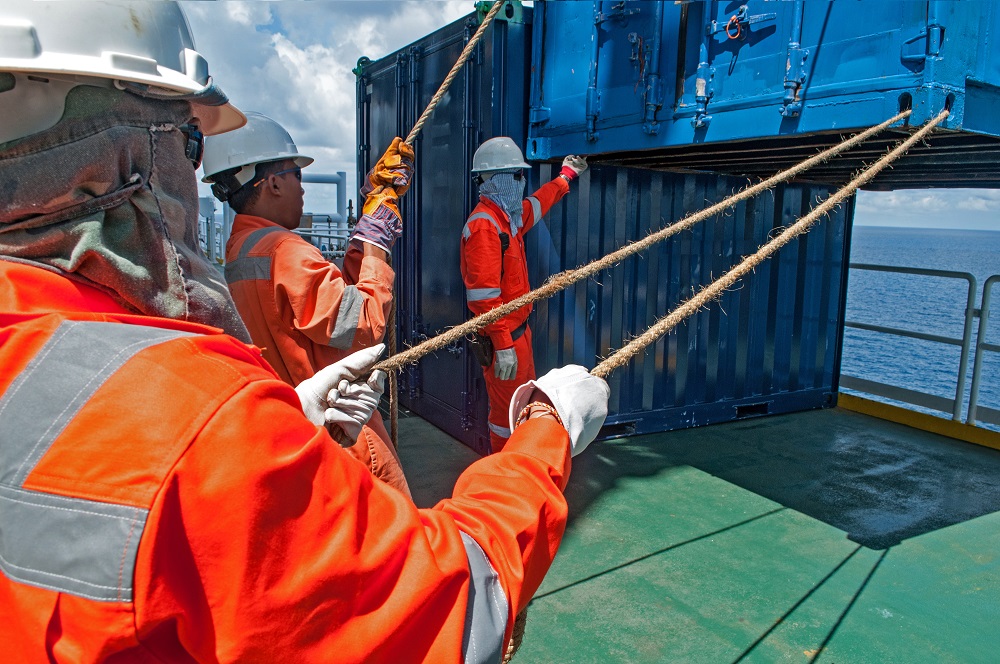After a maritime accident, PTSD and other emotional trauma can be just as serious of a health problem as a physical injury. Even a near miss accident — one in which a maritime worker genuinely feared for their life — can result in severe emotional stress. The Jones Act and other maritime laws allow maritime workers and others to seek damages for the negligent infliction of emotional stress (NIES) — so long as they were within what the courts refer to as the “zone of danger” during the incident.

The “Zone of Danger” Test
The courts use a “zone of danger” test to determine if a plaintiff has a valid emotional injury claim. The zone of danger test limits recovery for emotional injury to those plaintiffs who sustain a physical injury as a result of a defendant’s negligent conduct, or who were “placed in immediate risk of physical harm” by a defendant’s negligent conduct.
Fear for one’s safety is crucial to passing the zone of danger test. In order to prevail in a claim for negligent infliction of emotional distress based on the zone of danger rule, the plaintiff must prove, among other things, that the defendant’s negligent conduct created an unreasonable risk of bodily harm to the plaintiff and that the plaintiff suffered an injury “in consequence of shock or fright” as a direct result of witnessing the accident.
In the Zone of Danger: Sawyer Brothers, Inc. v Island Transporter, LLC
Time and time again, courts applying the zone of danger test have found that plaintiffs on board vessels that experience near miss accidents are within the zone of danger. A recent court decision by the Sixth Circuit Court of Appeals, upholding an earlier ruling made by the U.S. District Court of Maine, shows how the zone of danger test is applied in maritime litigation.
Ryan and Ross Sawyer of Sawyer Brothers, Inc. hired Island Transporter, LLC to ferry three construction vehicles and their drivers from Rockland, Maine, to North Haven, Maine. While the captain checked the weather conditions inside the bay, he failed to do the same for the open stretch of water the vessel would cross during its voyage. During the trip, the ferry vessel encountered rough seas while traversing Penobscot Bay, and two of the vehicles tipped over onto the vessel’s port bulwark. This sudden load shift almost caused the ferry to capsize. Ryan and a passenger were inside one of the vehicles when it tipped over. He feared the vehicle would fall overboard while they were trapped inside. Ross also feared that the truck would fall overboard and that the vessel would capsize and they would all drown.
Fortunately, the ferry made it to port without further incident. Both Sawyer brothers developed symptoms of an NIES disorder as a result of their ordeal. They subsequently filed a maritime action against Island Transporter, LLC, claiming that the ship captain was negligent for their emotional distress (along with their property losses).
While neither suffered physical injuries as a result of the accident, both the plaintiffs and the defendants’ experts agreed that both Ross and Ryan could be diagnosed with PTSD because of the emotional trauma suffered during the voyage. Along with depression and nightmares, the Sawyer brothers also exhibited physical symptoms of PTSD, including insomnia, headaches gastrointestinal problems and nausea.
Both courts agreed the brothers’ PTSD symptoms resulted from being inside a zone of danger and awarded each $50,000 for their emotional distress.
Does Your Maritime Injury Claim Pass the Zone of Danger Test?
Are you a maritime worker affected by PTSD or some other emotional trauma after being caught in the zone of danger during an accident or near accident that was caused by the negligent actions of another? You may be able to recover compensation for the emotional, as well as physical, damages you have suffered.
The Louisana maritime lawyers at Lambert Zainey have been protecting the rights of injured maritime workers for over 40 years. Contact us today to schedule a free consultation with one of our experienced maritime attorneys to discuss your case and how being in the zone of danger has impacted your life.
After a maritime accident, PTSD and other emotional trauma can be just as serious of a health problem as a physical injury. Even a near miss accident — one in which a maritime worker genuinely feared for their life — can result in severe emotional stress. The Jones Act and other maritime laws allow maritime workers and others to seek damages for the negligent infliction of emotional stress (NIES) — so long as they were within what the courts refer to as the “zone of danger” during the incident.

The “Zone of Danger” Test
The courts use a “zone of danger” test to determine if a plaintiff has a valid emotional injury claim. The zone of danger test limits recovery for emotional injury to those plaintiffs who sustain a physical injury as a result of a defendant’s negligent conduct, or who were “placed in immediate risk of physical harm” by a defendant’s negligent conduct.
Fear for one’s safety is crucial to passing the zone of danger test. In order to prevail in a claim for negligent infliction of emotional distress based on the zone of danger rule, the plaintiff must prove, among other things, that the defendant’s negligent conduct created an unreasonable risk of bodily harm to the plaintiff and that the plaintiff suffered an injury “in consequence of shock or fright” as a direct result of witnessing the accident.
In the Zone of Danger: Sawyer Brothers, Inc. v Island Transporter, LLC
Time and time again, courts applying the zone of danger test have found that plaintiffs on board vessels that experience near miss accidents are within the zone of danger. A recent court decision by the Sixth Circuit Court of Appeals, upholding an earlier ruling made by the U.S. District Court of Maine, shows how the zone of danger test is applied in maritime litigation.
Ryan and Ross Sawyer of Sawyer Brothers, Inc. hired Island Transporter, LLC to ferry three construction vehicles and their drivers from Rockland, Maine, to North Haven, Maine. While the captain checked the weather conditions inside the bay, he failed to do the same for the open stretch of water the vessel would cross during its voyage. During the trip, the ferry vessel encountered rough seas while traversing Penobscot Bay, and two of the vehicles tipped over onto the vessel’s port bulwark. This sudden load shift almost caused the ferry to capsize. Ryan and a passenger were inside one of the vehicles when it tipped over. He feared the vehicle would fall overboard while they were trapped inside. Ross also feared that the truck would fall overboard and that the vessel would capsize and they would all drown.
Fortunately, the ferry made it to port without further incident. Both Sawyer brothers developed symptoms of an NIES disorder as a result of their ordeal. They subsequently filed a maritime action against Island Transporter, LLC, claiming that the ship captain was negligent for their emotional distress (along with their property losses).
While neither suffered physical injuries as a result of the accident, both the plaintiffs and the defendants’ experts agreed that both Ross and Ryan could be diagnosed with PTSD because of the emotional trauma suffered during the voyage. Along with depression and nightmares, the Sawyer brothers also exhibited physical symptoms of PTSD, including insomnia, headaches gastrointestinal problems and nausea.
Both courts agreed the brothers’ PTSD symptoms resulted from being inside a zone of danger and awarded each $50,000 for their emotional distress.
Does Your Maritime Injury Claim Pass the Zone of Danger Test?
Are you a maritime worker affected by PTSD or some other emotional trauma after being caught in the zone of danger during an accident or near accident that was caused by the negligent actions of another? You may be able to recover compensation for the emotional, as well as physical, damages you have suffered.
The Louisana maritime lawyers at Lambert Zainey have been protecting the rights of injured maritime workers for over 40 years. Contact us today to schedule a free consultation with one of our experienced maritime attorneys to discuss your case and how being in the zone of danger has impacted your life.







